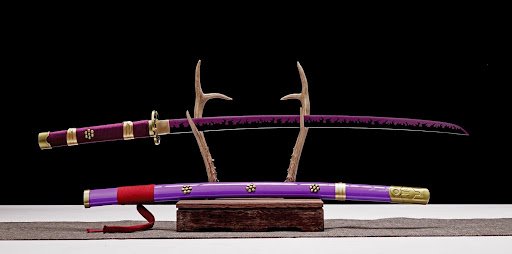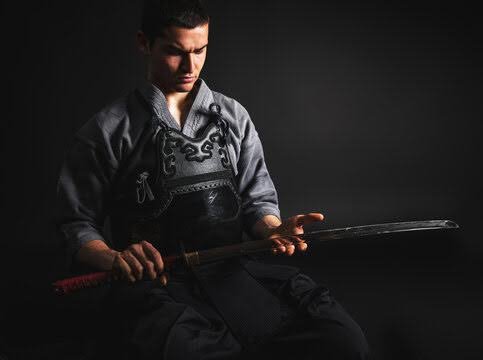When you hear the ring of metal striking metal, you’re likely traveling back to the heart of Japan, where two iconic blades have forged the legends that now grip both fighters and collectors. The katana, sleek and perfectly curved, has long been the heart of every samurai’s legend. The ninjato, shorter and sturdier, strides the night as the rumored companion of every shadowy ninja. Many ask which sword is the sharper, deadlier blade.
This blog post doesn’t deal in myth; it walks you through the real art of forging, the weight of history, and the fight itself. If you practice the sword, collect it, or simply admire its beauty, knowing how japanese katana and ninjato differ unlocks deeper secrets of Japanese technique and culture.
Don’t rush to a flashy verdict, though. Movies often oversell the katana’s glory, but each sword rose from its own need. The katana was praised for its reach and its lightning slashes, while the ninjato was shaped for quick, close finishes. Samurai and ninja never faced each other on the same battlefield: the first fought honorably; the second fought to survive and return to the night. Understanding these roots tells you more than you think about who held the sharper edge.
The Legendary Blades that Shaped Japans Warriors
Katana: The Metal Heart of the Samurai

The katana is the refined Japanese sword that drew the breath of the Samurai for more than a thousand years. Forged first in the Kamakura period (1185-1333), this gently-curved, single-edged blade became the principal weapon of the warrior class. For samurai, the katana became more than steel; it became the living sign of bushido—the way of the knight.
Forging a katana demanded months of unbroken labor. Fire, folded steel, and relentless tempering wove each blade, and each one sang a different story of grit and respect. A samurai wore his katana not just for battle but as a badge of honour and rank, and the blade’s steel could tip the balance between disgrace and glory in Japan’s savage wars. Over centuries, the katana evolved alongside battle tactics—first for the impact of charging cavalry, and later for the deadly stillness of duels that could shift a lord’s destiny.
Ninjato: Truth, Myth, and the Unseen Hand
The ninjato’s tale is less straightforward than movies would have it. Covert agents known as ninja did walk Japan’s out-of-sight paths, but the straight-bladed sword now called the “ninja blade” is a story of borrowed legend. Historical records of such a weapon are thin and often late, leaving many gaps. Older texts prefer longer, curved blades.
Debate still circles the blade: some hold that ninjato never were more than emergency tools, even from other swords that had broken. Others suggest a symbolic mark of the shadow-leaper, a short blade that could cut a path through the night. The straight form, some say, is easy to draw and reverse, fitting for the fleeting strike or the calm-back escape. Still, the ninjato remains a ghost, hanging somewhere between fearsome legend and the quiet shadows of Japan’s hidden wars.
Historical records indicate that historical ninja preferred shorter blades, using wakizashi or even adapted farming tools instead of the iconic ninjato of today. The ninjato’s straight blade, box-like guard, and minimalist form were shaped primarily by 20th-century filmmakers and writers, not by the blacksmiths of feudal Japan. While this origin story doesn’t reduce the sword’s popularity in today’s dojo and on collectors’ walls, knowing the difference helps us appreciate each blade on its own terms.
Master Craftsmanship: Where Beauty and Deadliness Unite
Katana: The Masterpiece of Japanese Forging

The katana embodies a summit of metallurgical genius. Legendary smiths began with tamahagane, a steel smelted in traditional tatara forges, manipulating carbon levels to create a material that balanced hardness and ductility.
Their workplace songs echoed for dozens of layers: a single ingot folded, reheated, and hammered again, sometimes more than sixteen times. Each fold expelled slag and sealed the blade in a living skin of metal with the wavy hada that true blades reveal in the sunlight. The katana’s graceful sickle-like curve arises because the heart and spine cool at different rates, a controlled chemical ballet that establishes the hamon: a shimmering line where the razor-sharp edge of the blade meets the resilient back.
The katana stands out because its full tang design joins the blade, handle, and fittings into one strong piece. This unity helps the sword handle huge impacts. The typical curve, which is about 0.5 to 0.8 inches, makes for clean cuts while keeping the blade strong and stable in battle.
Ninjato: Function First, Flash Last
The modern ninjato is built for function above all. Its straight blade is easier to hide and can thrust better than a katana. Some stories say its square tsuba can even grip a wall like a climbing tool. Yet if old ninjato really looked like this, they missed the advanced steel and heat-treating that the katana has. Without the careful folding and heat-treating of true Japanese sword forging, a historic ninjato would probably be a simpler and less deadly piece of metal.
Sharpness: The Chem the katana isn’t just beautiful—it’s smart. Science shows us that the way the curve distributes force makes every cut more powerful. When you swing the katana with the right follow-through, the curve pulls the edge right into the target, pushing the most cutting force into a small point. The rest of the blade then glides through, leaving a clean finish.
Seasoned polishers used to spend months perfecting the blade, working the edge until it could slice bamboo, cut through silk, and even sever iron, all in the same smooth motion. Legends of the katana cutting through several targets with one swing weren’t just stories; they were the payoff of centuries of careful design.
Ninjato: Theoretical Cutting Power
The straight blade of the ninjato, in theory, would cut differently from the katana. The flat edge makes it easy to stab, and in tight spots—like a hallway or alleyside compartment—the straight blade can swing with less fuss.
But if you didn’t have the expert folding and tempering found in true Japanese swords, a period ninjato would struggle. Without the right steel and heat treatment, its edge wouldn’t hold up compared to a well-crafted katana, letting you feel the difference in every slice and stab.
Combat Effectiveness: Battlefield Reality vs. Stealth Operations
Katana: Master of the Battlefield
The katana earned its fierce reputation through years of real combat. This sword was built to excel in many types of fighting: charging cavalry, open battle lines, or one-on-one duels. Its blade was long enough to strike at distant foes and strong enough to cut through armor or flesh.
Samurai training taught warriors to use the katana in many ways. A single slash could fell an opponent, while a quick thrust could pierce gaps in armor. The sword could also be used to deflect incoming attacks. Its balance, usually 4 to 6 inches in front of the guard, gave the fighter fine control for fast, intricate moves and enough weight for the power of a strong cut.
Ninjato: Tool of the Shadows
The ninjato, if it looked like the movies show, would have shined in a different kind of fight. The blade’s straight edge was made for silent, exact kills when a loud clash on the battlefield would be a failure. This dagger-like sword was light and simple, making it easy to hide and easy to carry on sneaking trips.
Still, on the open battlefield against a katana-wielding opponent, the ninjato would have struggled. Its shorter blade and rigid design would find it outmatched if the samurai had good steel and a strong swing. The ninjato was a sharp tool for its job, but that job was never to fight face to face with the katana.
Popular Culture vs. Historical Truth
Modern movies, anime, and video games shape our ideas of the ninja and the katana, but their depictions often stray far from what history tells us. The straight, short sword known as the ninjato regularly appears as the shinobi’s trademark blade, often glowing with secret techniques and magical powers that no samurai record ever mentions.
At the same time, the katana remains famed for its incredible sharpness, and while that fame is deserved, pop culture sometimes embroiders its powers, giving it invincible qualities that physics can’t obey. To see these two famous blades clearly, we must instead focus on their real age, how each was forged, and how each was meant to be used.
The Verdict: Context Determines Supremacy
Choosing the “deadliest” blade is more about the situation than the steel. The katana was crafted for open battle and for cutting armored foes, while the popular-ninjato is a fantasy of secret strikes and silent kills against unarmored targets. When these jobs are matched to the right blade, the katana’s long tradition of expert forging, its layered steel, and its curved-edge shape reveal a weapon that stays sharp, absorbs shock, and delivers decisive blows.
After centuries of testing and improvement, the katana’s blade plates are thinner at the edge and thicker toward the spine, giving a great ratio of straight-edge keenness to blade toughness, while also distributing the impact of hard parries. Of the two swords, history favors the katana for nearly every known battlefield, bunkhouse raid, and armored fight that samurai—or anyone else—faced.
